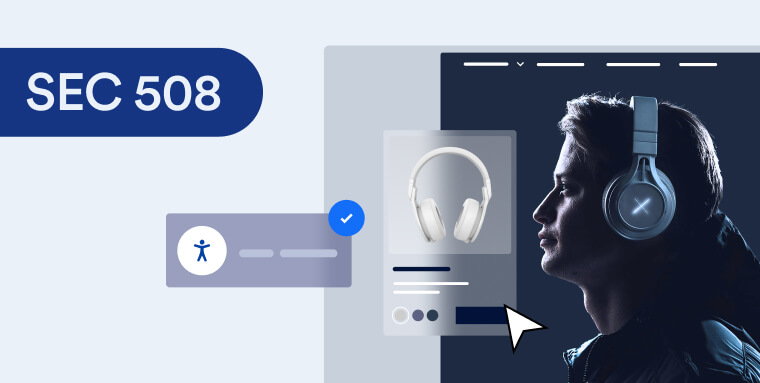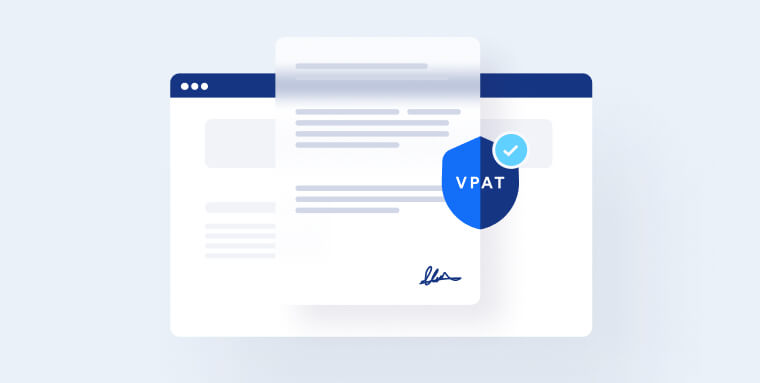The information presented within this guide is aimed at website owners seeking to learn the ropes of web accessibility. Technical elements are described in layman’s terms, and, as a rule, all topics pertaining to the legalities of web accessibility are presented in as simplified a manner as possible. This guide has no legal bearing, and cannot be relied on in the case of litigation.
Ensuring that your website and digital assets comply with Section 508 of the Rehabilitation Act is crucial if you are a federal agency, a federally-funded organization, or a service provider to a federally-funded organization.
To know whether your website and other information and communication technology (ICT) is Section 508-compliant, you will have to conduct a compliance test.
But how do you do that?
What areas of your website and digital documents will you need to look into and verify that they are compliant?
In this guide, we’ll explain what Section 508 compliance entails and explore testing tools and services that will ensure your website and other information and communication technology (ICT) are accessible to people with disabilities.
What is Section 508?
Section 508 is a key part of the Rehabilitation Act of 1973, and was enacted to ensure that people with disabilities have equal access to electronic and information technology developed, procured, maintained, or used by the federal government.
Although it originally did not mention website accessibility, a 2017 amendment to Section 508 expanded the legislation so that it includes all types of information and communication technology (ICT). ICT includes (but isn’t limited to) websites, mobile apps, online training, and online documents.
Today, Section 508 requires all federal agencies, organizations that accept federal funding, and service providers to such organizations to make their websites and other ICT products accessible to people with disabilities.
In early 2018, lawmakers added a rule setting the Website Content Accessibility Guidelines (WCAG) 2.0 as the standard for Section 508 compliance.
Under Section 508, most federal websites (and other ICT) are required to conform to WCAG 2.0 Level AA.
The importance of complying with Section 508
Complying with Section 508 is important from an ethical perspective, first and foremost. For website owners who have federal grants or contracts, it’s important to ensure that people with disabilities have equal access to electronic and information technology.
Achieving Section 508 compliance can be critical for business purposes, as well.
16% of the global population has a disability. Compliant websites and other ICT will ensure that this group can access and purchase your products and services.
What are the consequences of not complying with Section 508?

Organizations that are required to comply with Section 508 and fail to do so can face serious legal recourse, including lawsuits and costly settlements. Over the past 15 years, several individuals and institutions have filed compliance-related lawsuits against both federal agencies and federally-funded organizations.
Notable cases include:
- The National Association of the Deaf (NAD) filing lawsuits against Harvard University and MIT. The NAD accused these institutions of violating Section 508 by not providing accurate and comprehensive captioning for online course materials.
The case is still ongoing - Michael Leiterman, a blind attorney working for the Department of Homeland Security (DHS), suing the DHS for failing to equip him with accessibility tools so that he could perform his job. The DHS was forced to reach a settlement
How to test for Section 508 compliance

If you aren’t sure whether your website is Section 508-compliant, it’s helpful to run a test.
As a website owner, you have multiple options for testing your website regularly and ensuring it remains compliant.
Manual testing methods generate both quantitative and qualitative data. They tend to be more labor-intensive and can also be more costly.
Conversely, automated testing methods focus on quantitative data. They produce results much more quickly and tend to be more cost-effective.
So which method should you opt for? In most cases, it’s a good idea to incorporate both approaches. That way, you can automate key parts of the process while testing with assistive technologies to ensure there are no gaps in accessibility. Let’s break down each approach, separately:
Manual testing method
Manual compliance testing is typically conducted by professional testers who examine your website’s features and technologies and check for WCAG conformance.
Because the process relies wholly on manual efforts, a manual testing approach can be more expensive and more time-intensive. Yet, this type of accessibility testing can also provide you with invaluable qualitative data. For example, a manual test can tell you if using your website creates a challenging environment for people with specific disabilities. Using that data, you can create a plan to resolve the issue.
Here’s a brief overview of how manual testing works:
- First, testers check your website to see if it meets WCAG standards. They generally use assistive technologies like screen readers to ensure they can interpret the website
- Next, testers explore the website's user experience for visitors with various disabilities. Most professional testers examine compatibility with major disability categories, including vision impairments, physical disabilities, cognitive disabilities, and hearing impairments
Automated testing method
An automated testing approach entails incorporating automated tools to examine your website’s state of compliance.
Opting for an automated approach has its distinct advantages. Automated tools, such as accessScan, complement manual testing options and are often more efficient at completing the first step of the testing process described above.
Click here to use accessScan and find out if your website is Section 508-compliant.
The biggest benefits of using automated tools include speed and reduced cost.
For bigger websites or a large volume of websites, automated testing can be quicker and more cost-effective.
VPATs' role in Section 508 compliance testing

It’s important to note that if you are required to reach Section 508 compliance, you will need to fill out a Voluntary Product Accessibility Template (VPAT).
A VPAT should detail your website’s and other ICT's level of conformance to relevant accessibility standards. In the case of Section 508 compliance, that standard is WCAG 2.0 Level AA.
It is common to fill out a VPATafter you’ve reached Section 508 compliance. However, VPATs can be filled out during the testing process, as well, as they can help signal out areas of your website that aren’t compliant.
You can fill out a VPAT yourself. However, doing so requires you to be very well-versed in WCAG and other accessibility requirements. Therefore, many organizations opt for expert services, such as accessServices, to test their website and fill out the VPAT for them.
Click here to learn more about accessServices and how it can help you fill out a VPAT.
It’s important to note that filing a VPAT is necessary regardless of the testing approach you opt for.
Section 508 compliance automated testing tools
You can check if your website is Section 508-compliant with accessScan, a free Section 508 checker that identifies accessibility issues.
Once you submit your website’s URL, accessScan will run a quick, automated audit, examining its level of conformance with WCAG 2.1 Level AA.
Your web page will then be given an overall score: Compliant, semi-compliant, or non-compliant.
Additionally, you’ll be presented with a list highlighting the exact elements of a submitted web page that will need to be tweaked in order to achieve full compliance, along with instructions on how to do so. You will be able to download this list as a PDF.

